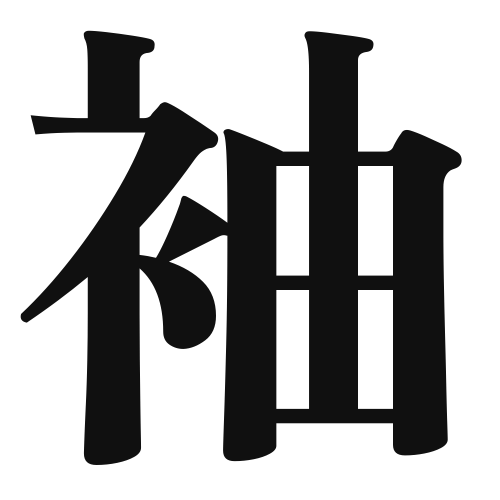1. Overview of Meaning
The kanji “袖” (sode) means “sleeve” in English. It refers to the part of a garment that covers the arm, typically found in shirts, jackets, and other clothing items.
2. Formation and Radical
Formation of the Kanji: The kanji “袖” is a phonetic compound (形声文字), which combines a semantic component and a phonetic component. The left part, “衣” (which means “clothing”), indicates that it is related to garments, while the right part, “シュウ” (pronounced “shuu”), provides the phonetic sound.
Radical: The radical of “袖” is “衣” (clothing), which is commonly found in kanji related to clothing and textiles.
3. Examples of Usage
Common Words and Phrases:
- 袖口 (sodeguchi) – sleeve opening
- 長袖 (nagasode) – long sleeves
- 半袖 (hansode) – short sleeves
Example Sentences in Daily Conversation:
- このシャツは長袖です。 (Kono shatsu wa nagasode desu.) – This shirt has long sleeves.
- 彼女は新しいドレスの袖を見せてくれました。 (Kanojo wa atarashii doresu no sode o misete kuremashita.) – She showed me the sleeves of her new dress.
4. Synonyms and Antonyms
Similar Kanji:
- 襟 (eri) – collar; while both are parts of clothing, “襟” refers specifically to the collar area, not the sleeves.
Antonyms:
- 裸 (hadaka) – naked; this term represents the absence of clothing, contrasting with “袖” which refers to a part of clothing.
5. Cultural and Historical Background
Relation to Japanese Culture: In Japan, sleeves have cultural significance, often associated with traditional garments like kimono. The style and length of sleeves can indicate formality and occasion.
Proverbs and Idioms: One common expression is “袖振り合うも多生の縁” (sode furi au mo tashou no en), which means “even the brushing of sleeves is a connection from a previous life,” emphasizing the importance of every encounter.
